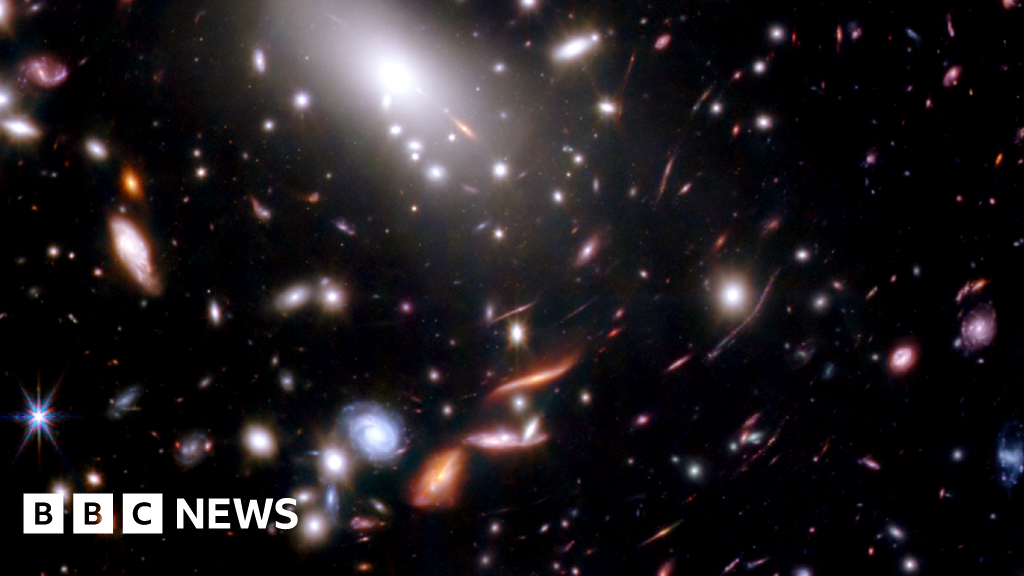 NASA
NASANasa’s James Webb Space Telescope (JWST) has for the first time captured an image of what our galaxy likely looked like just as it was forming – and it’s got space scientists feeling very Christmassy.
“I just love the sparkle galaxy with its Christmas lights shining as it was when the Universe was just 600 million years old,” Prof Catherine Heymans, Scotland’s Astronomer Royal, told BBC News.
The image shows ten balls of stars of different colours, appearing like Christmas tree baubles hanging in the cosmos.
It’s the first time that scientists have witnessed clumps of stars assembling to form a galaxy like our own Milky Way and holds clues as to how the Universe was formed.
Scientists have named the distant galaxy Firefly Sparkle, because it also looks like a swarm of multi-coloured fireflies.
From its orbit in space unhindered by Earth’s atmosphere, the most powerful telescope ever built has already shown us more distant and therefore older galaxies, but not one like our own in the early stages of forming and not in such detail.
“The data of what happened at this stage of the Universe is very sparse,” according to Dr Lamiya Mowla of Wellesley College in Massachusetts, who co-led the research.
“But here, we are actually watching a galaxy as it is being formed brick by brick. The galaxies we normally see around us are already formed so this is the first time we have seen this process,” she told BBC News.


Prof Heymans, Scotland’s Astronomer Royal, who is independent of the research team, described the discovery as “gorgeous, scientifically important and extremely festive”.
“I find it amazing that humans have built a telescope that allows us to peer so far back in time and that we can see these very nascent phases of the galaxy in such a beautifully festive way.”
The star clusters are of different colours because they are at different stages in their formation, according to Dr Mowla.
“It is so beautiful because the early life of a galaxy is extremely active,” she said.


“There is so much happening, there are new stars being born, there are massive stars dying, there is a lot of gas and dust around it and there is nitrogen and oxygen and because of the state they are in, you have these lovely colours.
“We are able to tell something about the ages of each cluster, the composition of their elements and the temperatures at which they formed.”
When Dr Mowla came across the galaxy, she had never seen clumps of stars in such vivid and varying colours. It led her to believe that there was something different about this system, so she checked how far away it was.
To her surprise it turned out to be more than 13 billion light years away.
The light from Firefly Sparkle is from not long after the creation of the Universe and so has taken more than 13 billion years to reach us. It is so small and so far away that not even JWST would have been able to see it, were it not for an extremely lucky cosmic coincidence.


There was a cluster of galaxies exactly between Firefly Sparkle and the JWST, which distorted spacetime to stretch the light from the faraway galaxy and effectively act as a gigantic magnifying glass.
Astronomers call this process gravitational lensing, which in this instance enabled the research co-lead Dr Kartheik Iyer of Columbia University in New York, and other members of the team, to see for the first time, incredible details of how the first galaxies like our own Milky Way formed.
“It takes the light coming from the firefly and bends it and amplifies it so we can see it in glorious detail,” he told BBC News.
“Our reconstruction shows that clumps of actively forming stars are surrounded by diffuse light from other stars. This galaxy is literally in the process of assembling.”
“When it does all this and we are able to see this incredible faraway galaxy, it is a very humbling, magical feeling.”


